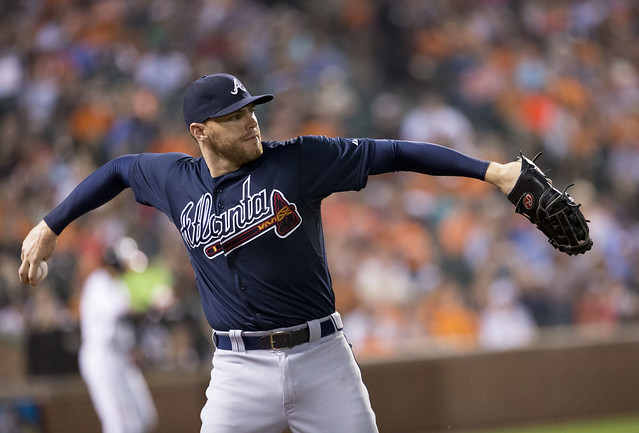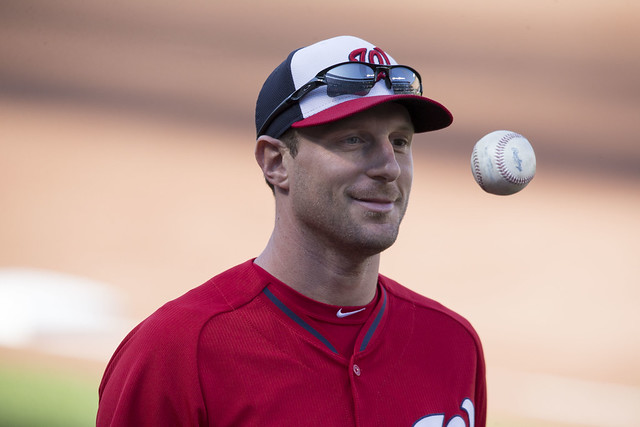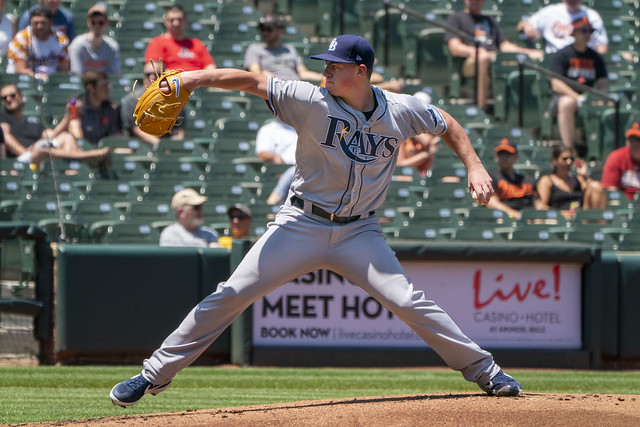2019 Trade Value: #31 to #40

As is the annual tradition at FanGraphs, we’re using a week around the All-Star Game — when the industry pauses to take a metaphorical breather — to take stock of the top-50 trade chips in the sport. For more context on exactly what we’re trying to do here, see the Honorable Mentions post linked at the top of the page.
For this post and the three to follow, I’ll present a graphic (by way of the wizard Sean Dolinar) breaking down each player’s objective skill level (represented, in this case, by a five-year WAR projection from ZiPS), contract/team-control details, rank in last year’s series, and then year-by-year details of age, WAR, and contract through the end of 2023, although a couple players have control beyond those five years, and some, you’ll notice, show projections for fewer years to reflect when those players reach free agency. For those readers who are partial to spreadsheets rather than blocks of text, I’ll also include all of the players we’ve ranked so far in grid format at the bottom of the post.
It should be noted that the ZiPS WAR forecasts influenced the rankings a bit. For players who were bunched together, it acted as an impartial tiebreaker of sorts, but the industry opinions I solicited drove the rankings.
With that said, let’s get to the next 10 spots on this year’s Trade Value list.
| Five-Year WAR | +12.1 |
| Guaranteed Dollars | $28.0 M |
| Team Control Through | 2024 |
| Previous Rank | – |
| Year | Age | Projected WAR | Contract Status |
|---|---|---|---|
| 2020 | 27 | +3.0 | $6.3 M |
| 2021 | 28 | +2.8 | $6.5 M |
| 2022 | 29 | +2.6 | $6.8 M |
| 2023 | 30 | +2.1 | $8.5 M |
| 2024 | 31 | +1.6 | $10.0 M |
I get the impression that the average baseball fan might not realize that Max Kepler is good now, and may only have a vague awareness of him as the prospect from Germany who ended up being more than just a generic baseball player who hails from a country off baseball’s beaten path. Now that we have a bigger sample of UZR and StatCast defensive metrics, we know that Kepler is a well above average defender. He’s 11th in outs above average among all outfielders this year and his UZR in the last season and a half is +21.4 runs, making him tops amongst major league outfielders in that span. The tidbit everyone repeated when Kepler initially signed out of Germany at age 16 was that both of his parents were ballet dancers; to be the top outfield defender in baseball at 6-foot-4 and 205 pounds suggests Kepler may be light on his feet as well. He’s having an offensive breakout in his age-26 season while also running a .258 BABIP, and he also signed a pretty team-friendly extension before the season. Read the rest of this entry »



